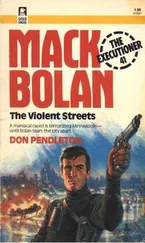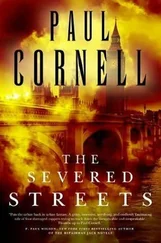Three days after her interrogation, Yolanda Marks is taken to a nearby Maryland State Police barracks, where a polygraph examiner determines that her statement is truthful. The same day, the sixteen-year-old witness who had implicated Anthony Owens as the shooter is also taken to the same barracks, but just before undergoing the test the teenager recants his earlier statement, admitting that he did not witness the shooting and that he only repeated what he heard on the street, hoping to end his own interrogation. The polygraph is then administered and the examiner concludes that in recanting his story, the teenager shows no deception. When the detectives confront his thirteen-year-old sister, she, too, acknowledges the lie, telling them that she had gone down to homicide and told her story because she was afraid her brother would be charged.
The case is down.
McLarney knows that the Cassidy detail still has weeks of work before it will be fit for trial. For one thing, the wrong man had been indicted, and his innocence will now have to be firmly established or a defense attorney could use him to wreak havoc. Likewise, the case will be bolstered immensely if investigators can find the gun or some other physical evidence to link Frazier with the crime. But it is down.
On the night that Yolanda passes the box, there is a homecoming of sorts when McLarney returns to Kavanaugh’s, the city’s predominant Irish cop watering hole, and stands his ground at the end of the bar. He leans against the wooden rail, centered between the pinball machine and the St. Francis Center poor box. It is a slow weekday night, with only a handful of detectives in the place, along with a few uniforms from Central and Southern and a couple guys from the tac sections. Corey Belt stops in for a little while but slips out after drinking a soda or two, leaving McLarney to wonder aloud what has become of the vaunted Western District when its best men don’t even drink beer. McAllister shows up, too, and stays, bellying up on the stool next to McLarney. This in itself makes the occasion special, because Mac doesn’t get out as much anymore, not since he and Sue moved from the city to a new home they built in the rural greenery of northern Baltimore County. To McLarney’s distress, his old Central District partner has in recent years been spinning in a more sensible, suburban orbit.
On this February night, however, when McLarney’s very universe has been righted by a rare, precious victory, when the brotherhood of cops has once again been affirmed in McLarney’s mind, the arrival of McAllister at Kavanaugh’s is serendipity itself. Good old Mac. Miracles have been marked on the streets of Baltimore, and Mac, a true pilgrim, has no doubt traveled many dangerous leagues to pay proper homage at this, the true shrine of Celtic sheriffry. McLarney sidles down the bar to wrap a beefy arm around his old partner’s shoulder.
“Mac,” says McLarney.
“T.P.”
“Mac,” McLarney says again.
“Yes, T.P.”
“My partner.”
“Your partner.”
“My bunky.”
McAllister nods, wondering how long this can possibly go on.
“You know, when we were working together you taught me a lot of shit.”
“I did?”
“Yeah, all kinds of important stuff.”
“Like what, T.P.?”
“You know, all kinds of shit.”
“Oh,” says McAllister, laughing. Nothing is so amusingly pathetic as when one cop tries to bond with another. Conversations descend into vague mutterings. Compliments are transformed into insults. Words of genuine affection become comically perverted.
“Really, you taught me a lot,” says McLarney. “But that’s not why I respect you. I respect you for one thing.”
“What’s that, Terry?”
“When it was time for you to fuck me,” says McLarney soberly, “you were very gentle.”
“Of course I was,” says McAllister without hesitation.
“You could have just bent me over the hood of the car and had your way, but you were gentle with me. And very patient.”
“Well, I knew it was your first time,” says McAllister. “I wanted it to be special.”
“And it was, Mac.”
“I’m glad.”
The brotherhood understands, the tribe hears the words unsaid. And when the two detectives finally let go of their deadpan and begin to laugh, all of Kavanaugh’s laughs with them. Then they kill off what’s left in their cans and argue briefly over the next round, each pulling his wallet and telling the other to take his money off the bar.
As old partners always should.
THURSDAY, FEBRUARY 18
On the day that marks the end of two full weeks in the Latonya Wallace probe, Jay Landsman manages to slip away from the office in late evening. He drives west into the county, where a wife and five kids are beginning to forget what a husband and father looks like.
The route is so familiar that Landsman’s mind drifts free, and in the solitude of the car’s dark interior he tries to pull away from the details of the case and view the entire puzzle. He thinks about the terrain on Reservoir Hill, about the alley behind Newington Avenue, about the location of the body. What, he asks himself, are we missing?
The sergeant couldn’t argue with the logic behind Edgerton’s rooftop theory, its explanation for the placement of the child’s body. But he never believed that the warrant on 702 Newington would yield anything. For one thing, there were nearly two dozen people living in that shithole. Even if one homicidal child molester managed to lure the kid into the house, kill her and keep the body in his room for a prolonged period of time, how could he have kept eighteen other occupants from knowing about it? Landsman was certain that the murder was the work of one man, acting alone, but the house at 702 Newington looked as though it were hosting the citywide convention for Baltimore’s underclass. Landsman wasn’t surprised when the lab reports on the clothing and sheets from the raid came back positive for blood, but negative for the victim’s blood type, just as none of the latent prints taken from the house matched those of the victim.
The outcome of the raid on 702 Newington left both Landsman and Tom Pellegrini wishing that they had spent more time searching the Fish Man’s store and apartment. Their haste at the Whitelock Street addresses-like everything else with this case-was particularly upsetting to Pellegrini, who worried about what may have been missed. Edgerton’s theory had been so sound, so sensible, and given the earlier child abuse report from 702 Newington, Pellegrini had been convinced. With the raid a bust, he had returned with Landsman to the old store owner.
Their interest in the Fish Man had increased since the raids, not only because of the outcome on Newington Avenue, but also because of a profile of Latonya Wallace’s killer prepared by the National Center for the Analysis of Violent Crimes, the FBI’s behavioral analysis unit. On the day after the raids, Rich Garvey and Bob Bowman had been dispatched to the FBI academy in Quantico, Virginia, where they provided raw data from the crime scene and autopsy to federal agents trained in psychological profiling.
The FBI’s characterization of a likely suspect had considerable detail. He would be “a nocturnal individual who will feel more comfortable at night… the offender will be known to young kids in the neighborhood and will be considered strange but nice to children. The offender may have already been interviewed by investigators or he may interject himself into the investigation… In most cases the offender will follow press accounts of the investigation and will make some effort to establish an alibi. The offender, who probably has been involved in similar crimes previously, will show no remorse over having killed the victim, but will be concerned over the possibility of being apprehended.”
Читать дальше












